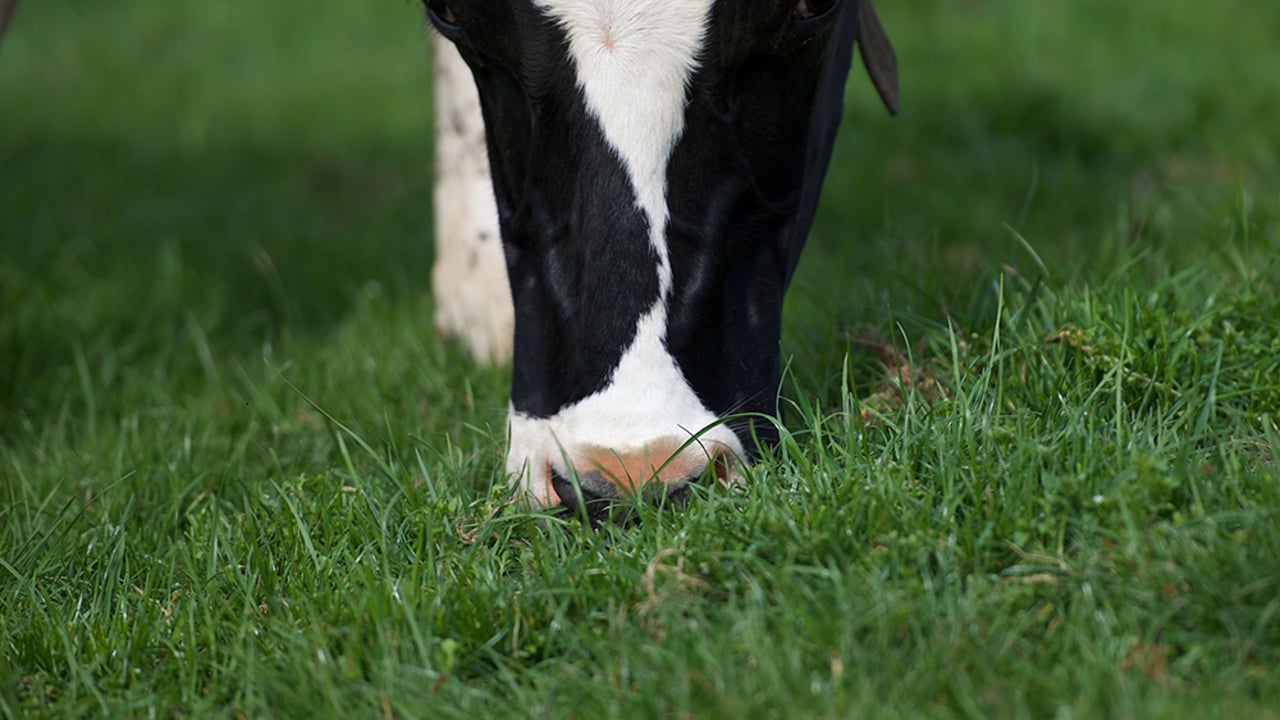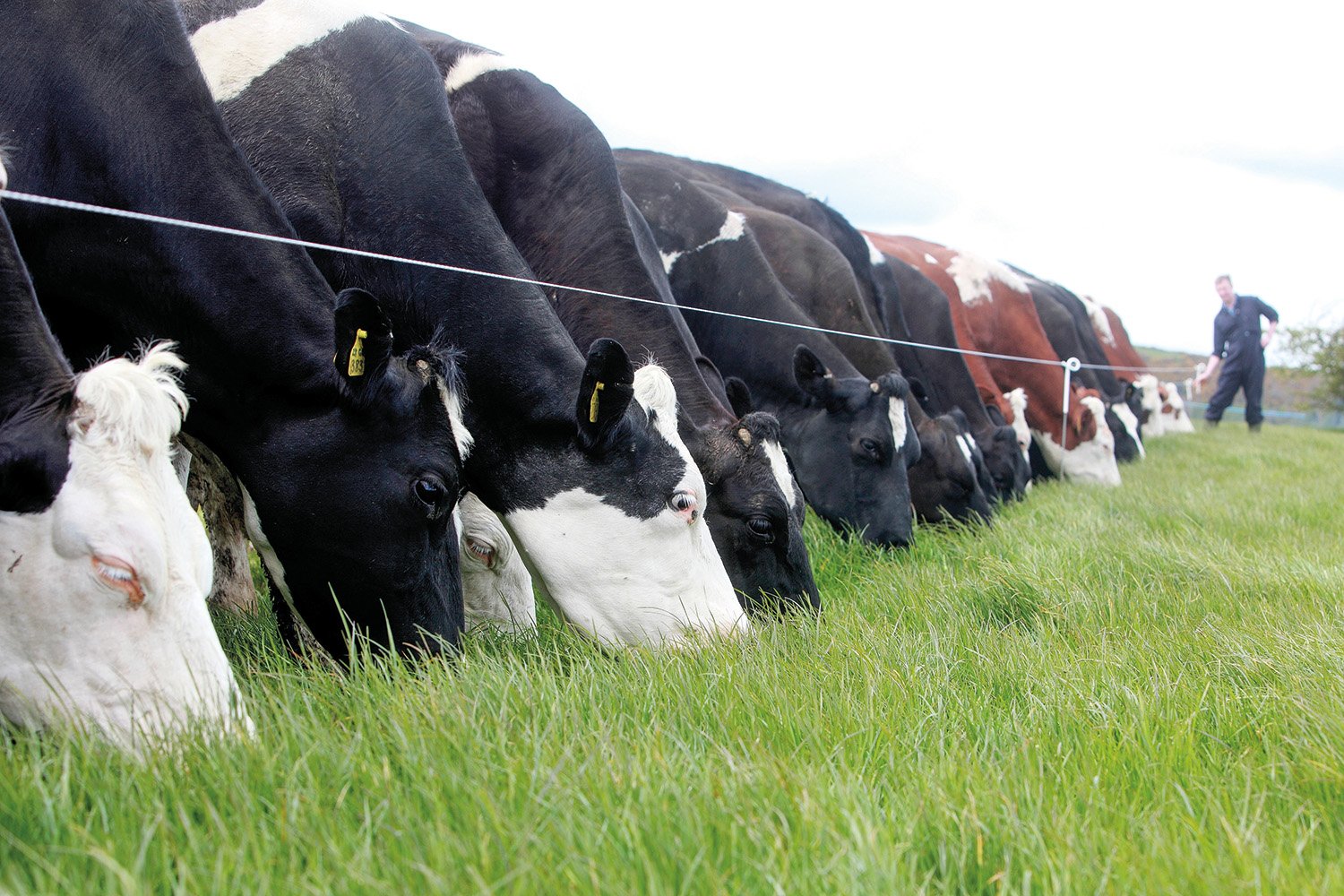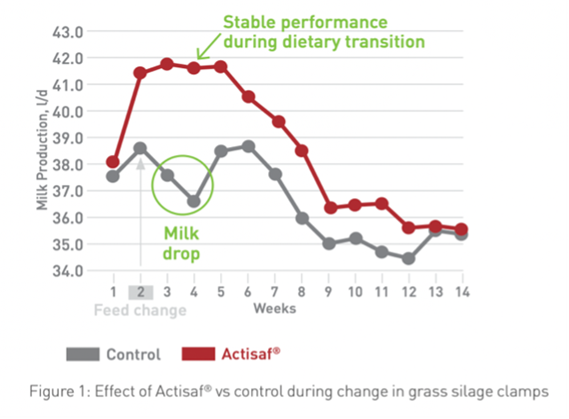Sponsored Article
Watch: Optimising rumen microbes - making every bite count
Sponsored Article

Understanding and supporting rumen microbial communities can be the key to hitting peak yield, optimising milk price, and making the most of every bite of feed.
For dairy farmers, every mouthful a cow eats needs to be converted efficiently into milk to maximise production, solids, fertility and – ultimately – profitability.
The real work happens in the rumen, where trillions of microbes break down feed and generate the energy and nutrients the animal needs.
So, how do we ensure the rumen is functioning at its best?
Recent research has shown that over 50% of a cow’s feed efficiency is dictated by the microbial composition of its rumen.
Some microbes are particularly efficient at converting feed into milk, with studies indicating that the most efficient cows require up to 2.6kg less dry matter (DM) per day than their counterparts to produce the same amount of milk.
Technical manager at Phileo UK and Ireland, Kevin Doyle explained: “Thanks to these microbial communities, the rumen provides most of the cow’s energy and nutritional needs through fermentation.
"By supporting key microbes, we can optimise this process and make the most of every bite of feed - regardless of system, stage of lactation and time of year.
"It’s helpful to think of the rumen like the engine of car; a major power source for the cow that needs regular maintenance and care to keep everything else running smoothly,” Doyle added.
With spring comes a valuable and cheaper feed source in lush, high-quality grass, but this also presents some challenges.
Firstly, the cows (and the rumen microbes) need to readjust to grazed grass in the diet. In addition, spring grass is often lower in fibre, higher in sugar, and highly variable in DM which can impact rumen pH and lead to variable dry matter intakes.
It is rich in crude protein, often to excess, and consists primarily of rumen degradable protein.
As such, we need to provide additional energy sources from starch and sugars, plus additional bypass protein to balance microbial fermentation.
Additionally, prolonged wet weather or lower grass availability can mean cows are unable to consume enough grass to meet their nutritional needs.
This is particularly critical in early lactation when nutrient demand is high and intakes are catching up, as any shortfall can impact peak milk yield and metabolic health during the breeding period.
“Feeding responses in grazing cows aren’t linear,” Kevin noted.
“At higher concentrate intakes, cows compensate by eating less grass. The trick is finding the right balance between maximising grass utilisation while also ensuring cows get the nutrients that grass alone can’t provide.”
One of the biggest concerns in spring grazing systems is maintaining butterfat levels, especially during the second rotation.
Sub-acute ruminal acidosis (SARA) can be a key factor in butterfat depression, as it lowers rumen pH and reduces fibre digestion.
However, the presence of polyunsaturated fatty acids (PUFAs) in grass at certain periods can also have an impact.
Low rumen pH amplifies the fat-suppressive properties of PUFAs found in stressed grass plants, which in turn reduce butterfat levels.
“When farmers see a drop in butterfat, what they’re really seeing is a disruption in the rumen microbes,” Kevin said.
“A small seasonal drop can be expected, but managing the diet can help mitigate more severe impacts.”
Including Actisaf live yeast probiotic in your feed can help by stimulating key fibre-digesting and lactic acid-utilising microbes.
This increases propionate production, improves fibre digestion, and raises rumen pH, helping to reduce some of the negative effects of PUFAs on butterfat levels.
By increasing the digestibility of feed and propionate supply, there is also a significant boost to cows in the vulnerable early lactation period as proven in recent research.
In today’s market, optimising milk price is just as important as maximising milk yield.
With base milk prices currently at or above 50c/L for standard 3.6% fat and 3.3% protein milk, there is an opportunity to capitalise on this favourable milk-to-feed price ratio through targeted nutrition.
Feed response rates vary depending on cow type and genetics, but general figures show:
- The first 4kg of concentrate can yield 2.2L of milk/kg of feed;
- Between 4-6kg of feed, the response drops slightly to 1.5L/kg;
- At 6kg of feed, the average response is 2:1, meaning every kg of feed (costing 38c) can return €1 in milk revenue.
For high genetic merit cows, efficiency remains high even at greater feeding rates, with responses of 2-2.2L/kg of feed being achievable.
Based on a response of 2L/kg of feed, a 50c/L milk price and a feed cost of €380/t, feeding 6kg of concentrate has the potential to generate a profit of €3.72/cow/day.
Both protein and butterfat percentage have a direct impact on profitability. In an Irish A+B-C payment system, lower protein and butterfat levels mean significant financial losses for most farmers.
E.g., in a typical 30L cow, reductions in butterfat percentage translate to monthly income losses per cow, as illustrated in the table below.
| Butterfat % | 4.20% | 4.00% | 3.80% | 3.60% | 3.40% |
| Protein % | 3.35% | 3.35% | 3.35% | 3.35% | 3.35% |
| Milk solids % | 7.55% | 7.35% | 7.15% | 6.95% | 6.75% |
| Milk solids (1.03 conversion) | 2.33kg | 2.27kg | 2.21kg | 2.15kg | 2.09kg |
| Value of fat and protein/cow/day | €16.35 | €16.01 | €15.67 | €15.33 | €14.99 |
| Value of fat and protein/L | €0.55 | €0.53 | €0.52 | €0.51 | €0.50 |
| Volume adjustment | €0.04 | €0.04 | €0.04 | €0.04 | €0.04 |
| Income per cow per day | €15.30 | €14.70 | €14.40 | €14.10 | €13.80 |
| Monthly income/100 cows* | €45,900 | €44,100 | €43,200 | €42,300 | €41,400 |
| Loss of income due to loss of butterfats compared to 4.2% butterfat | 0 | €1,800 | €2,700 | €3,600 | €4,500 |
Maintaining a well-balanced diet that supports fibre digestion and stabilises rumen pH is essential.
Kevin recommends Actisaf at an inclusion rate of at least 5g/head/day (or 1kg/t of feed at a 5kg feeding rate) to help stabilise the rumen environment and optimise milk yield and composition. This will cost around €10/t of feed.
Adding Actisaf Sc 47 live yeast to compound feed can help reduce the risk of SARA (and subsequent drop in milk solids) by stabilising rumen function and pH, while stimulating the growth of beneficial microbes.
This makes more energy available to the cow and fuels her to hit peak yield, return to oestrus, and synthesise milk lactose.
This dual mode of action means that Actisaf can play an essential role in spring-calving herds.
This is especially true for spring-calving herds in early lactaction, when looking after the cow and her rumen microbes is the key to success for the entire lactation. (Click here for more information about the transition period and early lactation).
University of Nottingham research in an early lactation herd found 10g/day Actisaf to increase feed efficiency by 5.5%, delivering 2.8kg more energy-corrected milk with no extra feed intake.
Over a 305-day lactation, this could mean 580L more milk per cow, lowering costs by over 1c/L.
“This isn’t just about feeding more - it’s also about feeding smarter,” Kevin concluded.
“By understanding the needs of rumen microbes and optimising their environment, we can ensure cows perform at their best while maximising farm profitability.”
You can call Phileo UK & Ireland at +353 (0) 61 708 099 or +44 (0) 2893 343900 for more information.
Sponsored Article







